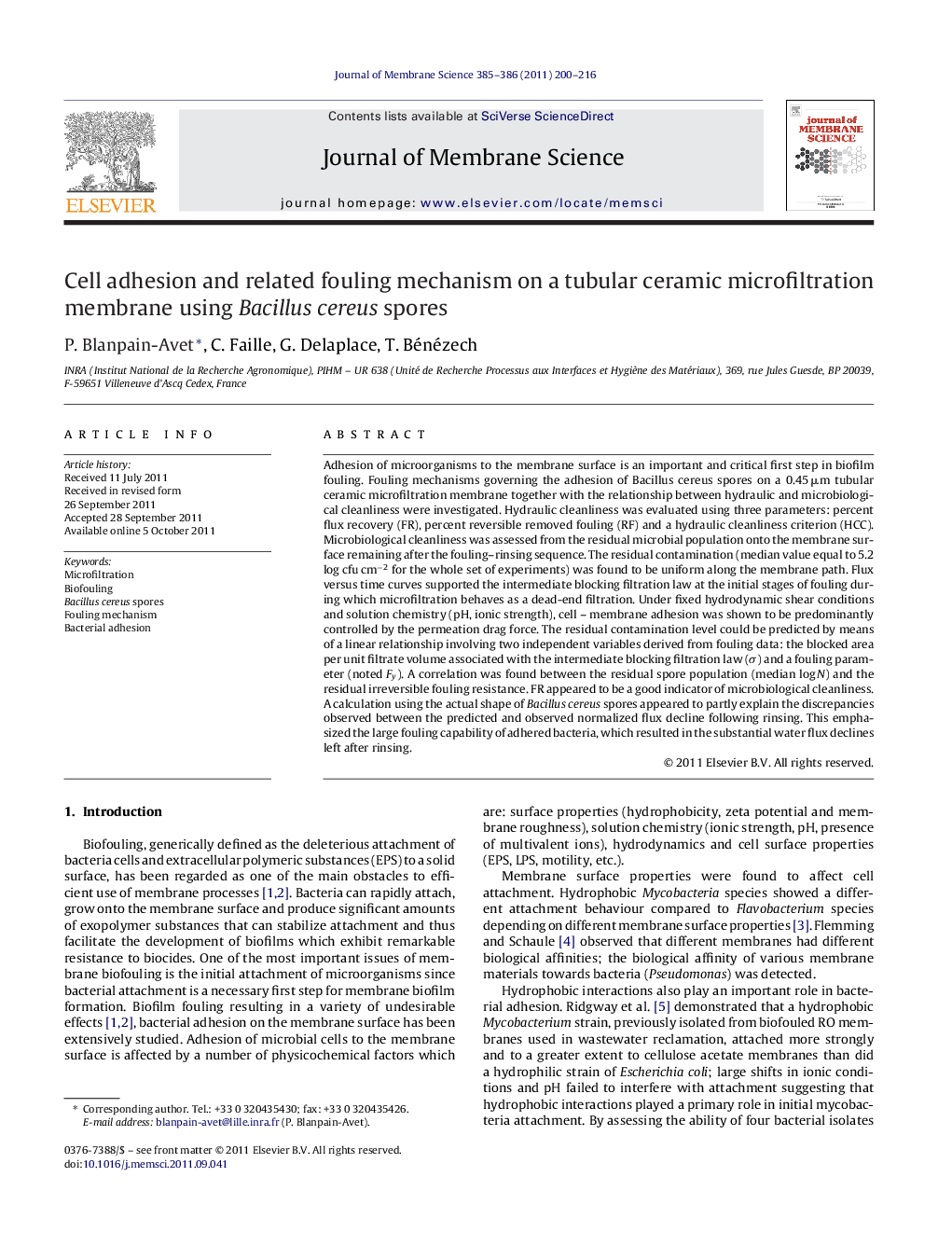| کد مقاله | کد نشریه | سال انتشار | مقاله انگلیسی | نسخه تمام متن |
|---|---|---|---|---|
| 635370 | 1456094 | 2011 | 17 صفحه PDF | دانلود رایگان |

Adhesion of microorganisms to the membrane surface is an important and critical first step in biofilm fouling. Fouling mechanisms governing the adhesion of Bacillus cereus spores on a 0.45 μm tubular ceramic microfiltration membrane together with the relationship between hydraulic and microbiological cleanliness were investigated. Hydraulic cleanliness was evaluated using three parameters: percent flux recovery (FR), percent reversible removed fouling (RF) and a hydraulic cleanliness criterion (HCC). Microbiological cleanliness was assessed from the residual microbial population onto the membrane surface remaining after the fouling–rinsing sequence. The residual contamination (median value equal to 5.2 log cfu cm−2 for the whole set of experiments) was found to be uniform along the membrane path. Flux versus time curves supported the intermediate blocking filtration law at the initial stages of fouling during which microfiltration behaves as a dead-end filtration. Under fixed hydrodynamic shear conditions and solution chemistry (pH, ionic strength), cell – membrane adhesion was shown to be predominantly controlled by the permeation drag force. The residual contamination level could be predicted by means of a linear relationship involving two independent variables derived from fouling data: the blocked area per unit filtrate volume associated with the intermediate blocking filtration law (σ) and a fouling parameter (noted Fy). A correlation was found between the residual spore population (median log N) and the residual irreversible fouling resistance. FR appeared to be a good indicator of microbiological cleanliness. A calculation using the actual shape of Bacillus cereus spores appeared to partly explain the discrepancies observed between the predicted and observed normalized flux decline following rinsing. This emphasized the large fouling capability of adhered bacteria, which resulted in the substantial water flux declines left after rinsing.
► Fouling mechanism governed by Bacillus spores adhesion in microfiltration processes.
► Relationship between hydraulic and microbiological cleanliness.
► Flux versus time curves support the intermediate blocking filtration law.
► Cell-membrane adhesion is predominantly controlled by the permeation drag force.
► Residual contamination level is predicted linearly using two independent fouling parameters.
Journal: Journal of Membrane Science - Volumes 385–386, 1 December 2011, Pages 200–216